I spent the last two weeks of June 2009 in Tegucigalpa, Honduras with Donna Conlon. We built a solar still to purify water from the Choluteca River, which became polluted after Hurricane Mitch struck in 1998. Like the solar ovens, the solar still uses the energy from the sun directly, in this case to heat water, causing it to evaporate. The purified condensate is returned to the river. The still was primarily constructed from found materials.
The cleansing process of our still functions as a symbolic gesture; only a very small quantity of water is actually purified. Far greater potential exists in the communication of the utilized methods to members of the community in Tegucigalpa.
The project has been funded by MUA.
Here is an article about the project (in Spanish).
Here are some images documenting the project:
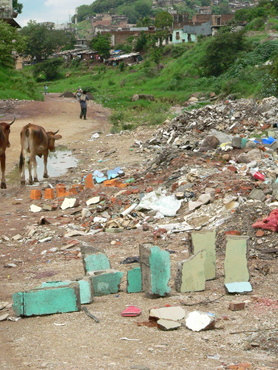 |
|
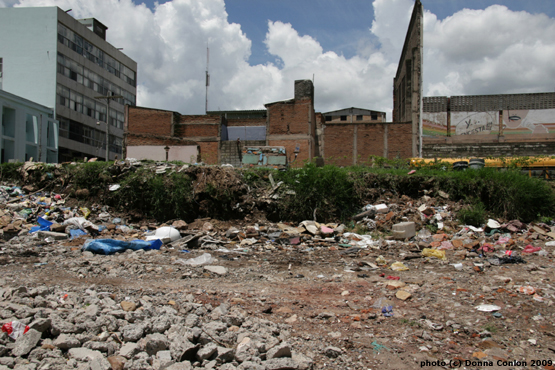 |
We used recycled materials as much as possible. The lower part of the still was built with rubble scavenged from these piles adjacent to the site. |
|
This is a view from the river. The structure on the right is what remains of a gymnasium following the damage from Hurricane Mitch in 1998. The city was unable to recover from the damage; the space formerly claimed by the gymnasium has been recovered as a parking lot. |
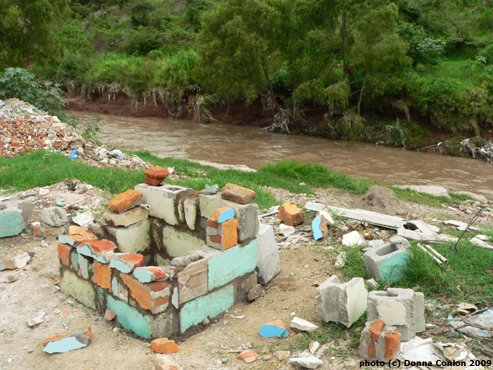 |
|
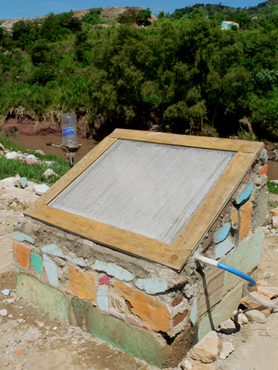 |
We constructed walls for the bottom of the still, using concrete to connect the scavenged remains from former buildings. |
|
A sheet of plexiglas collects the condensation, which drips down to a collection trough and then exits the still through the tube on the right. |
Previous to the trip:
June 10 , 2009
Here are some images of the second still, made in preperation for the trip. This one is the 'box style' still. We're planning to make a version beased on this type of still in Tegucigalpa. This one is made out MDF, plexiglass, aluminum and styrofoam.
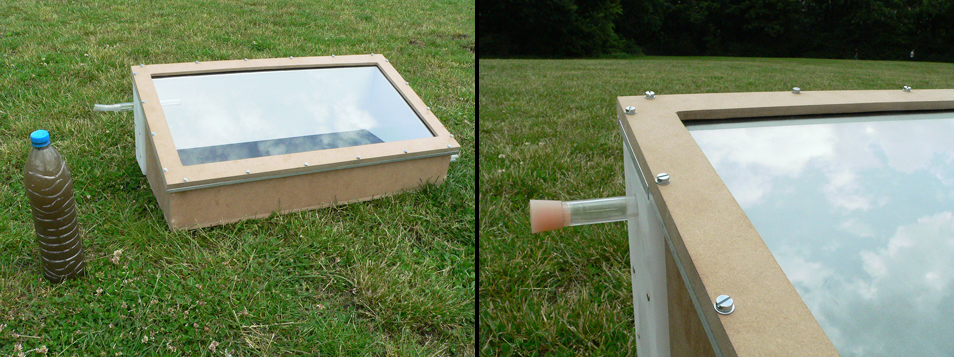
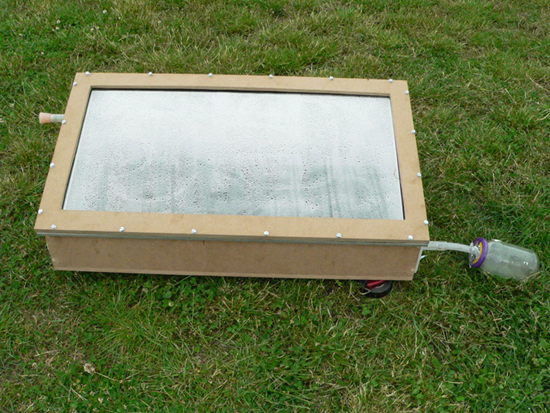
April 6, 2009
Here are some images of a small system involving a parabolic curve. It's mostly made out of plastic. The reflective material is aluminum foil. There is a small copper tube at the focal point, spray painted black. The tube became quite hot; any water in the tube must have been boiling.
 |